#notosuchus
Text
Dreams about crocodiles
I'm used to dreaming really weird shit. Like REALLY weird.
Among all these dreams it's not uncommon for crocodiles to appear in some form or another, and while I usually don't usually remember them, some have stuck in my mind so much that I've taken them to art.

I call this one "Hold Araripesuchus gentle, as an arepa" (Arari, Arepa… get it?… nevermind).
The context and why a genus of notosuchus from the Cretaceous of Gondwana had ended up in what appeared to be a wildlife recovery center in South Africa (The environment was savannah and there were other animals such as rhinos, giraffes, zebras…) is unknown.
These little critters were running like lizards all over the place until I managed to grab one and hold it like in the picture.
I swear they looked so real that at no time did I question their existence (Although I suspect my mind used Paleosuchus to fill in the blanks and make them more believable).

The second is somewhat more recurring. In it, I work on a crocodile farm in Northern Australia.
While feeding the freshies (Crocodylus johnsoni , the Australian freshwater crocodiles) a huge male scrambles up and rips off half of my rigth hand.
Ironic that in a place with saltwater crocodiles it is a freshie who tries to kill me, but that's life I guess.
97 notes
·
View notes
Photo
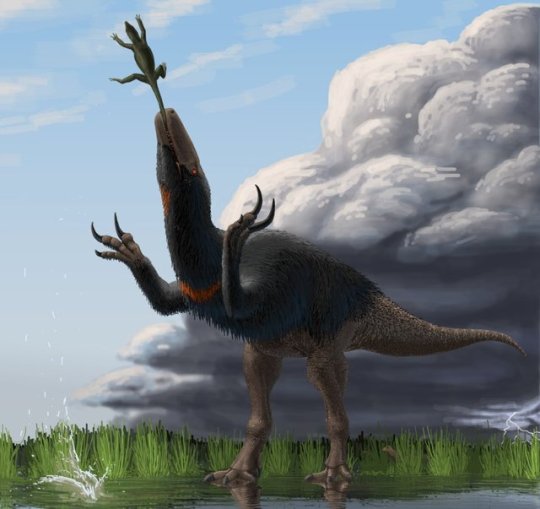
An Offering To The Storm Gods by Batavotyrannus
26 notes
·
View notes
Video
youtube
Every creature in Dinosaur Planet
#dinosaurs#pyroraptor#velociraptor#protoceratops#oviraptor#dinosaur planet#iguanodon#notosuchus#daspletosaurus#shuuvia#saltosaurus#allodaposuchus#discovery channel#birds are dinosaurs#paleontology#animated#animated film#dinosaur movie#dinosaur show#plesiosaur#queztalcoatlus#aucasaur#land crocodile
1 note
·
View note
Text
I’m reading about African Cryptids, and there is one that has me smh.
The Gbahali.
Most of the cryptids are like, “this is a supernatural creature from legends”
but in Liberia where the Gbahali is from, the hunters there are like “this is a normal animal that we sometimes catch and eat.” It’s not any kind of crazy giant weird thing, either, it’s just basically a 30 foot crocodile with a noticeably shorter snout and longer legs, which, we know there have been crocodilians that match this description, such as the Postosuchus. When shown pictures of reconstruction illustrations of Postosuchus, those hunters are like, yeah, that’s pretty much the animal we’re talking about. Kinda rare, very delicious.
and yet it is listed right alongside the Adze, a mythical being that is a type of vampire that can change into a firefly and can possess people and turn them into witches.
Now, the Gbahali is almost certainly NOT a Postosuchus, because those lived more than 200 million years ago in North America. The only reason Postosuchus is relevant is because it is in the crocodile family and matches the description, which proves that species of the croc family can take this form -- and actually, there have been many crocodilians throughout their long line that have matched this description: a crocodile with a shorter snout and longer legs
Here is Postosuchus, North America 230 million years ago

here is Baurusuchus, Brazil 90 million years ago

And there are many more, iberosuchus, notosuchus, and many more longer legged shorter snouted crocodilian species throughout time

it is a known and repeated form that crocodile species evolve into whenever it suits them.
So when native hunters of an area with an ecology that exactly matches where this type of crocodilian tends to evolve tells us they know it lives there because they sometimes kill and eat it...
That seems very different to me than, say, the Popobawa, a one-eyed, bat winged demon that can change into a human and sodomizes victims in both forms.
In conclusion, yeah, I think the Gbahali is a real creature that exists.
121 notes
·
View notes
Text
Terrestrisuchus gracilis
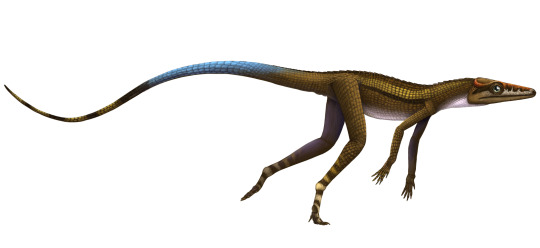
By Scott Reid
Etymology: Land Crocodile
First Described By: Crush, 1984
Classification: Biota, Archaea, Proteoarchaeota, Asgardarchaeota, Eukaryota, Neokaryota, Scotokaryota Opimoda, Podiata, Amorphea, Obazoa, Opisthokonta, Holozoa, Filozoa, Choanozoa, Animalia, Eumetazoa, Parahoxozoa, Bilateria, Nephrozoa, Deuterostomia, Chordata, Olfactores, Vertebrata, Craniata, Gnathostomata, Eugnathostomata, Osteichthyes, Sarcopterygii, Rhipidistia, Tetrapodomorpha, Eotetrapodiformes, Elpistostegalia, Stegocephalia, Tetrapoda, Reptiliomorpha, Amniota, Sauropsida, Eureptilia, Romeriida, Diapsida, Neodiapsida, Sauria, Archosauromorpha, Crocopoda, Archosauriformes, Eucrocopoda, Crurotarsi, Archosauria, Pseudosuchia, Suchia, Paracrocodylomorpha, Loricata Crocodylomorpha
Time and Place: Sometime around 205 to 203 million years ago, in the Rhaetian of the Late Triassic.
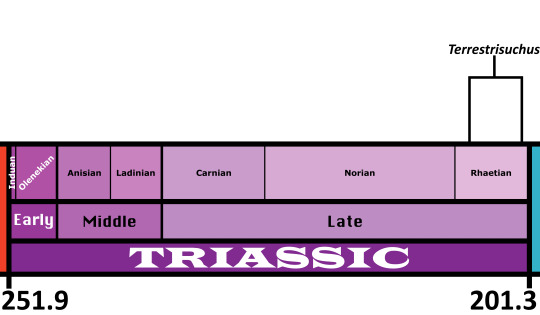
Terrestrisuchus is known from the Cromhall Quarry of England and the Pant-y-ffynnon Quarry of Wales
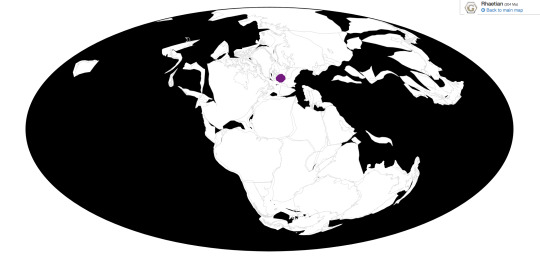
Physical Description: Terrestrisuchus was a fascinating early Crocodile relative, hailing from the Latest Triassic of the British Isles. Fascinating, in that, the closest relatives to proper Crocodiles we have from the Triassic are not the crocodile-esque Phytosaurs, nor the large land predator Rausichians, but these strange fast-moving reptiles from the end of the period. Looking weirdly like early dinosaur relatives, but crocodile-like, they were the most derived Pseudosuchians found in the Triassic and the earliest known Crocodylomorphs, the group of Pseudosuchians that would make it into the Jurassic and dominate the rest of the Mesozoic Era. Terrestrisuchus was nothing like a modern Crocodile in external appearance - small and thin, with a long flexible tail and long legs directly underneath its body. It was around 1 meter long, and only would have weighed up to 15 kilograms. It had a long, narrow head as well. It also had hindlimbs much longer than its forelimbs. They also ran on their toes, another trait that Terrestrisuchus shared with dinosaurs. That said, unlike dinosaurs, it would have been covered in tough scales - though what sorts, we can’t be sure, as skin impressions of Terrestrisuchus are not known.
Diet: Terrestrisuchus had small, needle-like teeth, indicating it was most likely insectivorous.
Behavior: Terrestrisuchus was, more likely than not, warm-blooded - making it a very quick and agile animal. The proportions of its front legs heavily indicates that it would have been able to run bipedally, allowing it to be even more agile and able to run after quick insects flying above its head. Terrestrisuchus running on its toes was even more helpful to this end, and its long tail would have served as a good counterbalance against the front-heaviness of its head and arms. Still, it probably couldn’t have used its hands for grabbing - at least, not as well as distant dinosaur cousins. The long snout of Terrestrisuchus would have been able to snap shut around a fast moving insects, helping to trap it quickly while on the move. It probably would have been able to gallop, at least somewhat, and thus could catch even faster insects in its environment. As an archosaur, it most likely would have taken care of its young, though the extent of this care is unknown.
Ecosystem: During the Triassic, Wales was an island in the tropical archipelago that was Europe. This island was occasionally hit by storms and was dotted by caves, which ended up being where the fossils were preserved. Terrestrisuchus lived alongside dinosaurs such as Pantydraco, the pseudosuchian Aenigmaspina, rhynchocephalians such as Clevosaurus and Diphydontosaurus, procolophonids, and the weird gliding Kuehneosaurus.
Other: Despite what you may read floating around online, it is not widely accepted that Terrestrisuchus is a juvenile of Saltoposuchus. The suggestion has only been made in a conference poster from 2003, and the two genera are separated both temporally and geographically.
Also shoutout to @deinonychusfloof because she studies Pant-y-ffynnon fauna!
~ By Meig Dickson and Henry Thomas
Sources Under the Cut
Benson, R. B. J., S. Brussatte. 2012. Prehistoric Life. London: Dorling Kindersley. 216.
Bronzati, M., F. C. Montefeltro, M. C. Langer. 2012. A species-level supertree of Crocodyliformes. Historical Biology 24 (6): 598 - 606.
Crush, P. J. 1984. A Late Upper Triassic Sphenosuchid Crocodilian from Wales. Palaeontology 27 (1): 131 - 157.
Fiorelli, L., J. O. Calvo. 2008. New remains of Notosuchus terrestris Woodward, 1896 (Crocodyliformes: Mesoeucrocodylia) from the Late Cretaceous of Neuquen, Patagonia, Argentina. Arquivos do Museu Nacional, Rio de Janeiro 66 (1): 83 - 124.
Irmis, R. B., S. J. Nesbitt, H.-D. Sues. 2014. Early Crocodylomorpha. Geological Society, London, Special Publications 379: 275 - 302.
Emily Keeble, pers. comm.
Keeble, E., Whiteside, D.I., Benton, M.J. 2018. The terrestrial fauna of the Late Triassic Pant-y-ffynnon Quarry fissures, South Wales, UK and a new species of Clevosaurus (Lepidosauria: Rhynchocephalia). Proceedings of the Geologists’ Association 129(2): 99-119.
Nesbitt, S. J. 2011. The early evolution of archosaurs: relationships and the origin of major clades. Bulletin of the American Museum of Natural History 352: 1 - 292.
Palmer, D., ed. 1999. The Marshall Illustrated Encyclopedia of Dinosaurs and Prehistoric Animals. London: Marshall Editions. 98.
Sertich, J. J. W., P. M. O’Connor. 2014. A new crocodyliform from the middle Cretaceous Galula Formation, southwestern Tanzania. Journal of Vertebrate Paleontology 24 (2): 576 - 596.
#terrestrisuchus#terrestrisuchus gracilis#sphenosuchian#pseudosuchian#triassic#triassic madness#triassic march madness#prehistoric life#paleontology
189 notes
·
View notes
Text
im rewatching Dinosaur Planet and this is the first time ive noticed how prevalent model reuse is in it
the crocodilians in Pod’s Travels and Alpha’s Egg are the same model, but it seems like the model is made for the Notosuchus in Alpha’s Egg, because it doesn’t look much like Allodaposuchus
#the Saltasaurus model is also used for both the big titanosaurs and the Magyarosaurus in Pod's Travels#Pod's Travels in general is kinda a weak link in the program; most of it doesn't hold up to modern interpretations of the fossils#and some of it like the dwarf abelisaurs is just plain fictitious
3 notes
·
View notes
Photo
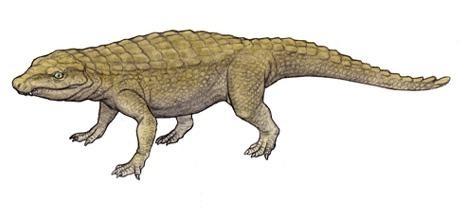
The southern crocodile, Notosuchus (1896)
Phylum : Chordata
Class : Reptilia
Order : Crocodylomorpha
Suborder : Notosuchia
Family : Notosuchidae
Genus : Notosuchus
Species : N. terrestris, N. lepidus
Late Cretaceous (85 Ma)
1,5 m long and 36 kg (size)
Bajo de la Carpa formation, Argentina (map)
Paleontologists have known about Notosuchus for over a hundred years, but this prehistoric crocodile didn't garner much attention until a new study published in 2008 proposed an astonishing hypothesis: that Notosuchus possessed a sensitive, prehensile, pig-like snout that it used to sniff out plants from beneath the soil. On the face of it (sorry), there's no reason to doubt this conclusion: after all, convergent evolution--the tendency of different animals to evolve the same features when they occupy the same habitats--is a common theme in the history of life on earth. Still, since soft tissue doesn't preserve well in the fossil record, Notosuchus' pig-like proboscis is far from a done deal!
7 notes
·
View notes